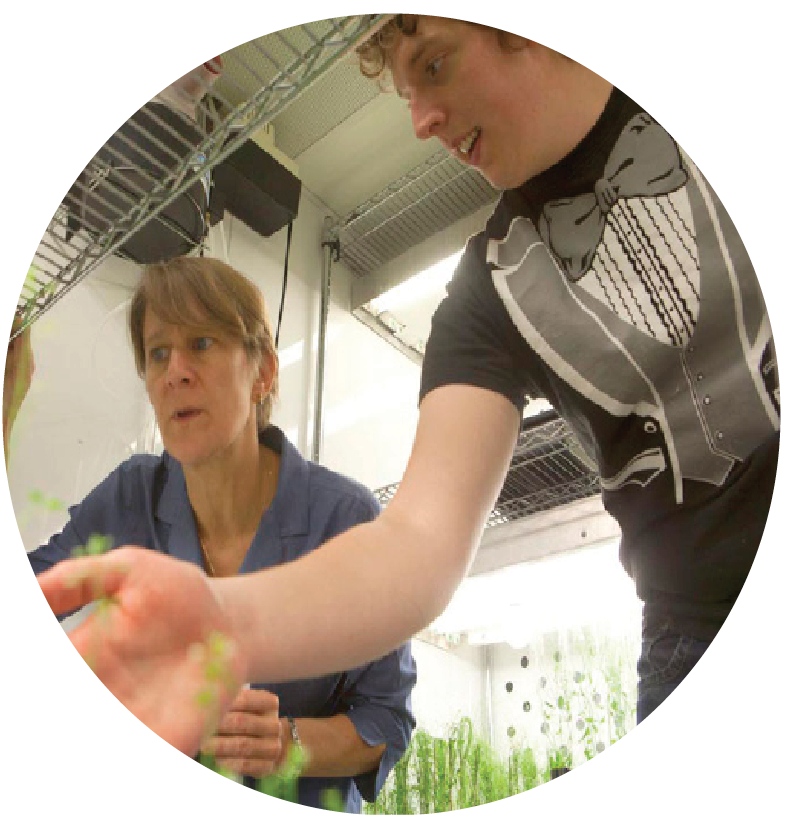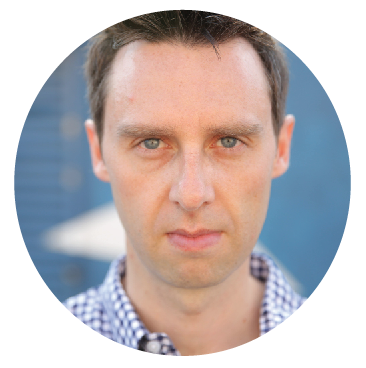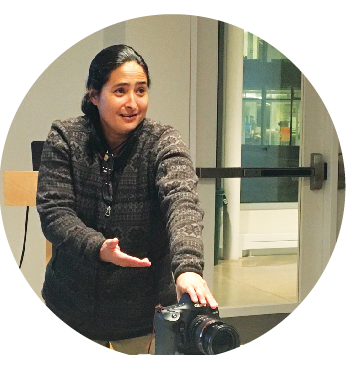Dr. Kyle Skottke by Grace Gibbs ’18
There is often a fear of Genetically Modified Organisms (GMOs) that lacks scientific backing. On Monday, January 23, Dr. Kyle Skottke came to Choate to speak about the wide gap between the beliefs held by scientists and the general public on scientific issues, particularly regarding GMOs.
Dr. Skottke works as a molecular analyst at the St. Louis headquarters of Monsanto, the leading producer of genetically engineered seeds and Roundup, a glyphosate-based herbicide. In addition to this talk, he attended a few science classes throughout the day, including Current Topics in Biology and Honors Biology at the Kohler Environmental Center. Dr. Skottke stayed in the studio apartment at the KEC.
Biology teacher Dr. Selena Gell is primarily responsible for Dr. Skottke’s seminar. She and Dr. Skottke studied together in the molecular biology department at Brown’s graduate school. Dr. Gell’s Current Topics in Biology course covered genetically modified organisms; she said, “Since we spent all that time learning about GMOs, I thought it would be a great opportunity for the students to actually talk to someone who does this professionally.”
Dr. Skottke’s talk, titled “What’s a scientist to do in a post-fact world,” discussed the lengthy (around 13 years) and expensive (up to 150 million dollars) process of creating a genetically modified seed for the market. He also stressed the importance of grounding one’s beliefs in science before answering questions.
Attendee Alan Luo ’18 said, “The talk was pretty interesting, and it was liberating to have ideas about GMOs backed up by actual facts.”
Arielle Landau ’17 disagreed. “I came out of the talk being very critical about what he said. I felt like he had been somewhat brainwashed by Monsanto as he thought they could do no wrong, when in reality Monsanto has been responsible for the detriment of many small farmers across the globe.”
While at Choate, Dr. Skottke said he “engaged in some great conversations.” He continued, “There were some great skeptical questions, and that’s a really healthy thing to do, to be skeptical. Hopefully if you ask the right questions and you get to concrete facts, at the end of the day you can come to a useful conclusion. I hope students came away feeling that as a scientist at Monsanto, I’m really trying to develop useful traits that are beneficial to farmers and to ensure that those traits are safe.”
He concluded, “Based on the quality of questions that were asked, the student body was obviously very thoughtful and receptive. I was surprised at how engaged all the students were and it was really a pleasant visit.”
Mr. Nate Edwards by Haley Chang ’18
Although the applicability of big data analytics is growing at a pace never seen before, data science is a relatively new concept for many. Mr. Nathan Edwards ’98 visited Choate on Friday, January 20, to flesh out some of the ways data science can be incorporated to the Choate curriculum. “Regardless of what you’re focused on, becoming data-literate is critical in order to understand the data that you’re bombarded with every day,” explained Mr. Edwards.
Mr. Edwards, who attended the Georgia Institute of Technology and began his career working for the Department of Defense, is now a partner at Madera Technology, where he created a model that uses big data to predict specific company revenues.
He said, “When I told the Development Office about my interest in supporting and funding interdisciplinary modeling simulation and data analysis, they told me that I had to meet Joe Scanio. Joe and I had a good mind meld last summer — he’s doing some great things up at the KEC, and he really loves the benefits that data analysis provides to students there. I think he sees how powerful data analysis can be in other disciplines as well. This visit was just to see what Joe and other students are doing, so that I could help out in the best way I can.”
Mr. Scanio, the Director of the Environmental Immersion Program, added, “When we talked last year, I asked if he’d be willing to visit again and speak to students. He was very excited about the opportunity to engage with them.”
On Friday, Mr. Edwards spoke in various KEC and upper-level math classes, as well as to several faculty members. Mr. Patrick Guelakis, who attended the faculty meeting, observed, “Nate is very interested in knowing where in the curriculum the faculty feel that it’s appropriate to incorporate more hard data — not only the science classes, but also for history and social sciences as well.”
In the evening, several students were invited to a dinner with Mr. Edwards. According to Mr. Scanio, the dinner was arranged so that Mr. Edwards could hear from students the potential ways in which these techniques could be used. Katrina Gonzalez ’17, an attendee, said, “His stories about his work at Georgia Tech and the Pentagon were really fascinating. I also loved how he connected all of that back to how data science is used at large.”
Melody Li ’18, another attendee, commented, “I was very inspired by Nate’s story. He really showed me that a person can be good at both big data work and history and the humanities. Nate’s passion towards war history has led him to where he is today. I think my biggest takeaway is to do what I love because I would not know where that would lead me to.”
Ms. Julie Jacobson by Haley Chang ’18
Students watched in awe as photojournalist Ms. Julie Jacobson showed them the photos she took during the Winter Olympics in 2002, the Iraq War in 2003, and the Haiti Earthquake in 2010. On the evening of Monday, January 23, Ms. Jacobson came to Choate to talk to the journalism classes about her life as a photojournalist.
Ms. Jacobson, who currently works for the Associated Press (AP), began her career as a photojournalist after graduating from the University of Kansas in 1992, when she began working for the Kansas City Star. She said, “ I think it was a really good first job because I had to do everything — shoot photos, set up assignments, supervise other photographers, make page layouts.”
She joined the AP in San Francisco as a staff photographer in 2001, after which she covered events such as the 2002 Winter Olympics and the 2003 Super Bowl. Furthermore, Ms. Jacobson was embedded in the U.S. Marines and the Army in Iraq in 2003 and 2004, respectively, as well as the military in Afghanistan in 2009 and 2010.
During the lecture, students were first shown a montage of select photos that she took throughout her career and were able to ask questions after. Arin Kaye ’17, an attendee, commented, “I was particularly taken aback by one of her anecdotes. While she was in Haiti, she saw a pile of dead bodies on fire. And then she saw a woman screaming something with a Bible in her hand. Immediately realizing that the woman was about to throw the Bible to the fire, Ms. Jacobson got her camera and captured it. I was fascinated by her intuition and ability to read the situation in a matter of seconds.”
Mr. Mike Peed, one of the two Journalism teachers, inquired via Twitter if she would be interested in talking to the journalism students about her work. Mr. Nicholas Molnar, the other journalism teacher, explained, “The students will be building a portfolio that’s going to include media beyond the written component — visual media, podcast, infographics, a photo essay — and we wanted to make sure that we offer students opportunities to see how a professional journalist approaches her work and also to make some new contacts in the journalism world.”
Karen Shure ’17, another attendee, said, “Previously, I was only really exposed to written forms of journalism, but it was interesting to see how the process that goes into creating a work of photojournalism really resembled what you would do in writing as well.”
After the lecture, Ms. Jacobson commented, “The students were very engaged and were asking questions that college students ask. I was very impressed by how knowledgeable they were.”





